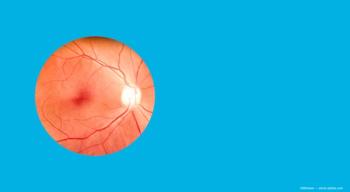
Heru addresses gaps in vision care with wearable diagnostic platform
Mohamed Abou Shousha, MD, PhD, discusses Heru’s wearable AI-powered diagnostic devices at AAO 2021.
At the 2021 American Academy of Ophthalmology annual meeting, Mohamed Abou Shousha, MD, PhD; founder, president and CEO of Heru; spoke with the Modern Retina™ team about Heru and their new diagnostic platform, re:Vive 2.0. The new device now monitors color vision, contrast sensitivity and dark adaptation.
Video transcript
Shousha: My name is Mohamed Abou Shousha. I'm the CEO and founder of Heru. I'm also a practicing ophthalmologist from Bascom Palmer Eye Institute.
Heru was born out of necessity from Bascom Palmer, where we see 300,000 patients every year. And we know all the gaps in vision care. And we created Heru to address those gaps.
Heru is a wearable platform that is AI powered. It has many verticals to it: health and wellness eye exams, diagnostic eye exams, home monitoring and chronic disease management. And we close the loop by providing vision augmentations to patients to allow them to live their best lives.
I'm very excited to announce that we have launched Heru re:Vive 2.0, which is our FDA-registered diagnostic platform. It provides six diagnostic tests, five CPT codes in one wearable device. We provide suprathreshold visual field testing, full threshold visual field testing, Ishihara, D-15, contrast sensitivity and dark adaptation—and that's all in one device.
The status quo are devices, each one of them that would take a room, a separate room, a technician, a workflow, and it's about like $30–50,000. We replace all those by one wearable device.
Our science is solid. We have shown equivalency to the standard of care. So for the patient, this means better access to vision care, better vision care, better experience and ultimately better health for the patient.
Newsletter
Don’t miss out—get Ophthalmology Times updates on the latest clinical advancements and expert interviews, straight to your inbox.














































.png)


